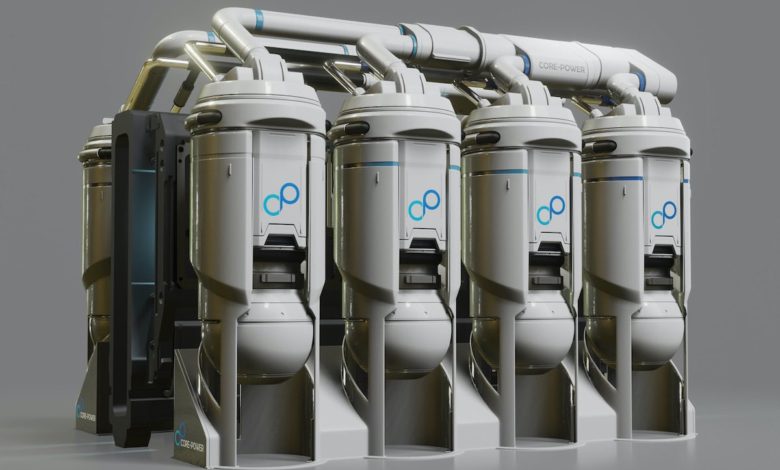The greatest impediment to the widespread adoption of nuclear power across the merchant fleet?

What’s the single greatest thing holding back atomic energy from being deployed as a major form of ship propulsion?
Nuclear power has roared back into shipping headlines in the past few months after a decade on the sidelines.
Bjørn Højgaard, the CEO of Hong Kong shipmanager Anglo-Eastern told sister title Splash Extra in September: “I think that in 50 years nuclear molten-salt-reactors will be par for the course in the shipping industry, and we will look back at the current time and wonder why we dabbled in alternative pathways for greenhouse gas-free propulsion.”
A company chaired by Microsoft co-founder Bill Gates has formed a consortium to develop atomic batteries, which could be used on ships, while other marine nuclear research and development is ongoing in Asia, Europe and North America.
Nevertheless, the shipping industry remains very divided on the issue.
Today, Splash asks what is the greatest hurdle proponents of nuclear power face in making it a viable propulsion format – is it public perception, cost or regulators that stand the most in the way from taking this energy source ahead en masse?
The question is one of six posed in the latest MarPoll, our quarterly survey. Other topics covered look at newbuild prices, regional environmental regulations and which will be the best and worst performing shipping segments in 2021.
To vote takes just a couple of minutes and there is no registration. Have your say by voting here.

An industry that is still struggling for years with garbage disposal, enclosed space entry, lifeboat release gear mechanisms, Ballast water management and work/rest hours is unlikely to manage nuclear propulsion well.
IMO working committees always manage to whittle down regulations to a fuzzy and opaque document that leaves enough room for shipowners to escape best practices. There is far too much compromise in this industry.
minimal quality shipyards where welders live in infected barracks, Slave crew on board, ship managers specialized in hiding problems to authorities, bankrupt owners working at cheapest price for charterers… Does anyone in their right mind really believe that the planet’s biosphere would be safe with a nuclear fleet in hands of this garbage industry?
Well said pikeman, would this industry really be able to cope with the freelancing of nuclear power!
Very true. These are the facts. Being a former merchant marine seafarer, have seen all of this firsthand!
I think its unlikely that nuclear merchant fleets will comprise a significant portion of marine cargo transport largely because of political resistance.
I think its much more likely that nuclear powered sea vessels will be used to produce electricity for the production of methanol to replace oil and natural gas. Such nuclear facilities could be deployed to remote sites in the oceans for the production of carbon neutral synfuels, fertilizers, and industrial chemicals. Those same ocean waters could also be used for the extraction of uranium from seawater. The world’s oceans contain about 4 billion tonnes of uranium. Terrestrial uranium reserves are only about 8 million tonnes. However, marine uranium can never be depleted since interaction with the Earth’s continental crust is their source which contains over 100 trillion tonnes of uranium.
Electricity can be used to convert water into hydrogen and to extract CO2 from the atmosphere or from seawater. And hydrogen and CO2 can be easily synthesized into renewable methanol (eMethanol).
Methanol(currently derived from natural gas) as already transported by sea. So eMethanol could be transported by tankers to coastal towns and cities around the world including the Great Lakes area via the Saint Lawrence Seaway.
eMethanol can be used in natural gas electric power plants retrofitted to use methanol. Methanol can be used as a marine fuel. Methanol can be used in methanol fuel cell automobiles. Methanol can be converted into dimethyl ether, a clean diesel fuel substitute. Methanol can be converted into a variety of jet fuels. And methanol can be converted into gasoline (renewable gasoline).
A nuclear tug might make more economic sense. At least, initially.
A nuclear tug could tow huge ocean barges anywhere in the world. But at ports where nuclear vessels might be banned, a companion electric powered tug (recharged by the nuclear tug’s reactor) could transport the barge (10 to 100 kilometers) to port and then return to the vicinity of the nuclear tug.
That would mean that you’d only need one standard type of nuclear marine vessel to transport a large variety of cargo. And, of course, it wouldn’t have to be refueled for 20 or 30 years.